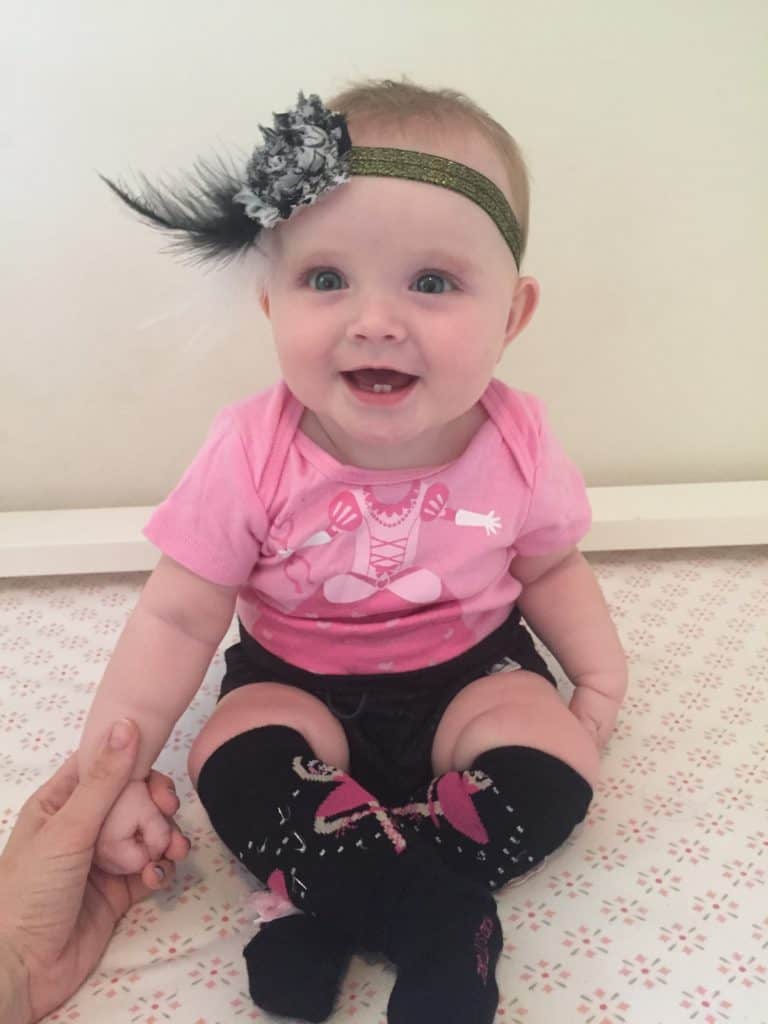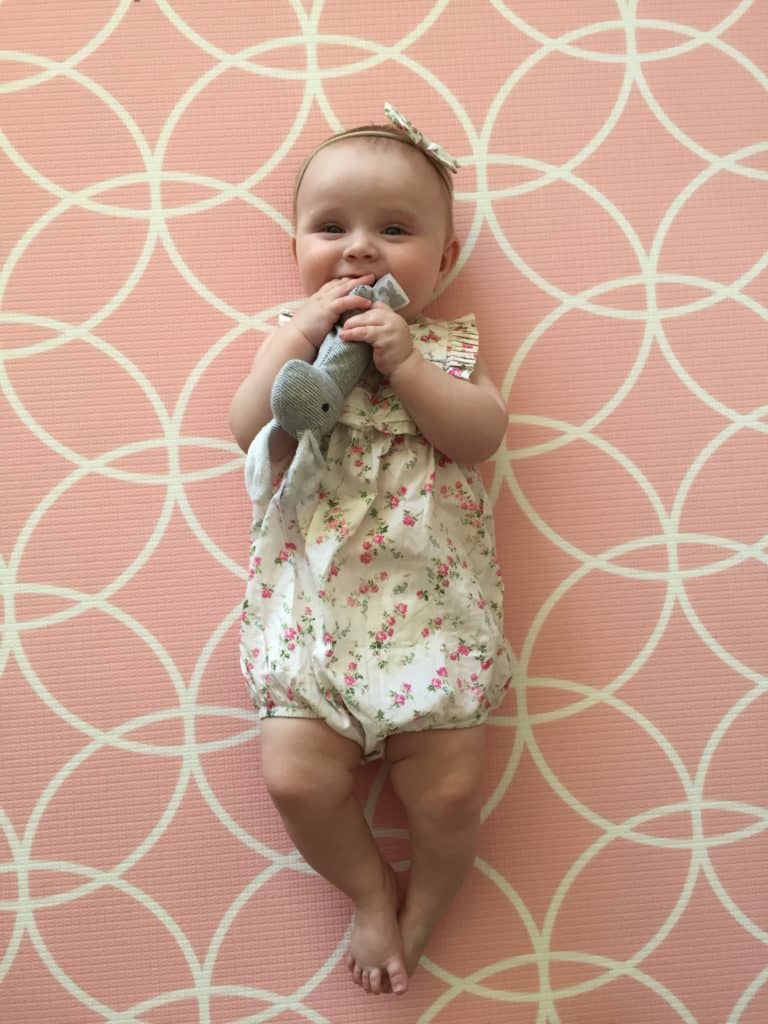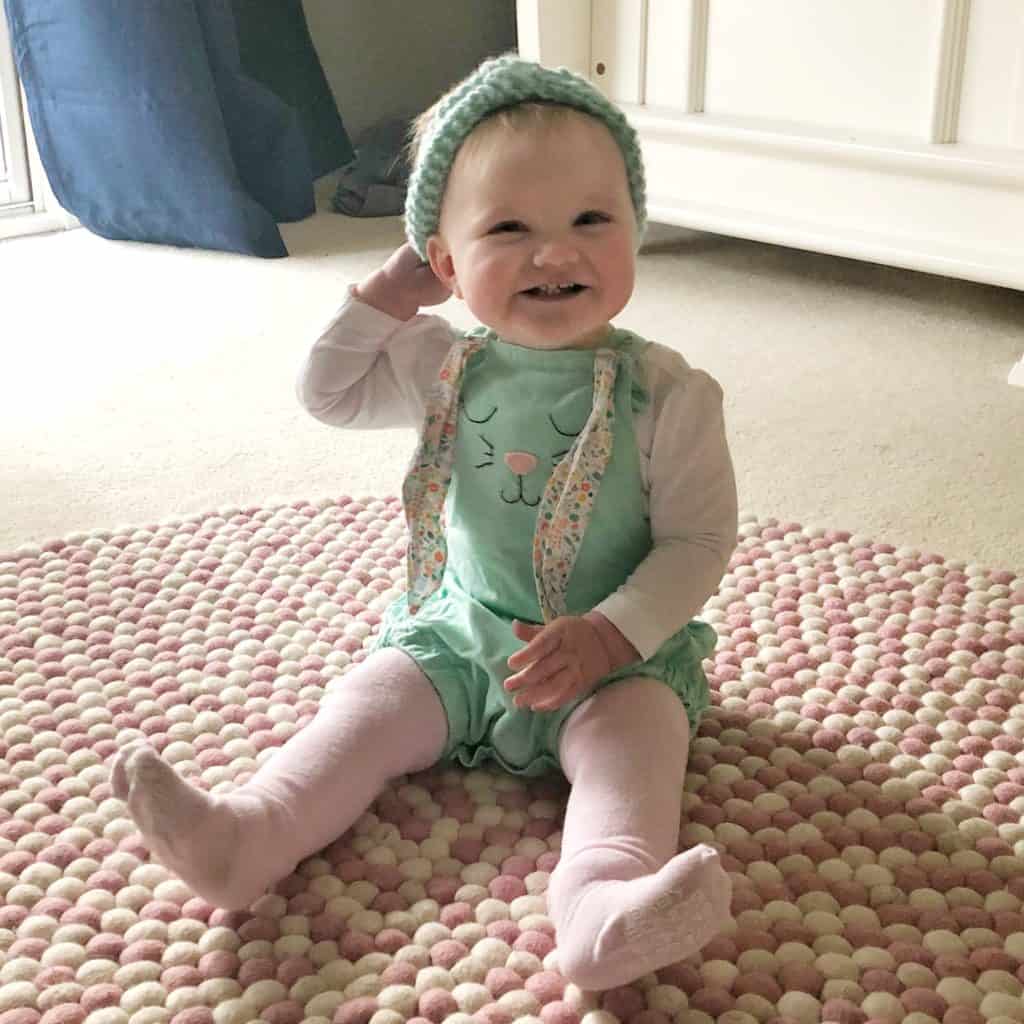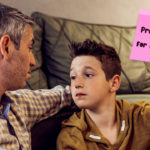When exactly do babies get teeth? Which teeth pop up first? How long do babies teeth for? And how do we help them with teething relief to manage their pain and discomfort? We answer all your questions and more to help you when it comes to babies and teething.
I clearly remember when my eldest daughter was just three months old. I dropped her off at the gym crèche. When I came back, the staff asked me if I had noticed she had a tooth popping through at the bottom of her gum.
I hadn’t.

There had been no warning signs. She didn’t grizzle, and she didn’t dribble. She wasn’t upset. I was lucky.
Fast forward a couple of weeks, and we were standing at the checkout of the supermarket. The woman behind the counter spotted her brand new tooth sticking out and seriously asked me, “Isn’t she too young to have teeth?”
I had no clue how to respond except to say, “Clearly not since she has one!”
Read on to find the answers to your baby teething and relief questions!
Table of Contents
When Do Babies Get Teeth?
This is a great question and one that you will receive a lot of varying responses to. I have heard health nurses telling first-time mums that two months is too early to be teething, and then I have my own daughter who got her first tooth at just three months old.
Basically, the answer is, from birth. Or, more accurately, even before they are born.
When I was in the hospital giving birth to my third baby, another mum had given birth to a baby with a tooth. It wasn’t discovered until she experienced pain while attempting to breastfeed (no wonder!). These are called neonatal teeth. Don’t worry; they aren’t all that common.
You need to be prepared for your baby to start teething from day one, as you never know when they will start popping up. A handy tip is to occasionally run your finger along their gum line, both the top and bottom. Doing this will help you feel and see if any teeth are trying to make their way through. Of course, teeth often appear in front of the gum when they are erupting, so you will also be able to pull down your baby’s bottom lip and see white dots under the skin.
Now, just because you see these, it doesn’t mean a tooth will appear any day. Unfortunately, for some babies, teeth can go up and down for a while before finally breaking through the gum. It is this initial part that is most uncomfortable for them and teething relief will be important—you are on the home stretch once the tooth has broken through.

Teething Symptoms
Sadly, our little babies are unable to talk to us and tell us when their teeth are hurting them, which is why we need to be on the lookout for symptoms to give them teething relief.
Here are just a few:
- Nappy rash
- Crying
- Fever
- Red cheeks
- Sucking on fists and toys
- Drooling
- Waking more at night
- Generally unsettled
- Pulling on the ear
Not every baby will get all these symptoms; they might show just a few of them. If you are lucky like I was with my daughter, there might be none at all! And, naturally, all these symptoms can be signs of other things, like illness, or just a generally unhappy baby. That’s why it can be so hard for parents to know if their baby is actually teething. For me, the best sign is to look out for those little white dots on the gum, which show the tooth trying to make its way through. That’s a fairly obvious sign you can rely on.
Teething Relief
It’s only natural to want to help your baby through this time, for your sanity and theirs. Here are some different methods that can be used to relieve the symptoms and pain of teething:
Teething Gels
This is a debated topic. Research has been released that suggests teething gels can be harmful to babies. However, it is generally accepted that this is harmful when too much is ingested, which isn’t a problem if they are used correctly.
Nurofen
While any pain relief can help, Nurofen is the best thanks to its anti-inflammatory properties. These properties can ease the pain and combat the swelling that comes with teething. Always be sure to follow the packet instructions.
Cold Discs
You can buy teething discs, which you can put in the freezer, for your baby to hold onto and suck on to ease their pain. The same goes for teething toys, such as rubber rings and so forth. It is handy to find toys attached to chains as you can hand these to your little one while you are out and about, and they won’t get lost if your baby drops them.
Amber Beads
I would place this one on the ‘to avoid’ list. Many dangers come with putting babies in teething necklaces, as they can break apart and your little one can choke on them. However, if you do choose to use amber beads, make sure you always remember to remove them before sleep time.
Finger
Use your finger to rub up and down their gums. Consider it a mini massage that can help alleviate some of the discomfort they are feeling.
Nappy Free Time
If your little one is suffering from bad nappy rash, try giving them some nappy free time in the sun. The vitamin D will help clean up the rash as quickly as possible.
Plenty of Hugs and Cuddles
Let’s face it, there is nothing better than being snuggled up when you’re feeling sad or in pain, so be prepared to give some extra cuddles during this time. One excellent option is babywearing, so you can keep your little one close to you while still having your hands free. It makes things so much easier.

Teething Facts
Now you know how to tackle the symptoms of teething to give relief to your little one, it is handy to equip yourself with some knowledge about the process of teething.
This handy chart shows exactly how the teeth erupt.
(insert here)
Once again, every baby is different, and they don’t always follow the same pattern. But in general, this is what you can expect.
This chart is handy when you are trying to peek inside your child’s mouth to see if any teeth are making their way through.
Thanks to those back molars, teething is a two- to three-year process. But don’t worry, you will often find there are plenty of breaks in there, so the pain isn’t constant for them.
Brushing Your Baby’s Teeth
So, your baby has their first teeth—now what?
Some people believe that because it is baby teeth, they don’t need to worry too much. I mean, they will fall out eventually anyway. While this may be true, good habits start young, and the last thing you need is for your little one to start getting holes in their baby teeth. Here are some ways you can look after them even at a young age:
Cut the Bottle in Bed
Don’t let your child go to bed with a bottle. Instead, offer them the bottle before bedtime and give their mouth a rinse out afterwards. If they go to bed with a bottle, the milk stays on their teeth and can cause a build-up of bacteria during the night, which can be harmful.
Use a Washcloth
You don’t have to start with a toothbrush. In fact, it is much easier to use a washcloth. Dampen it, hand it to your baby, and just let them have a suck of it in their mouth. It’s a great sensory experience for them and an easy way to ensure their teeth get a bit of cleaning each day.
Introduce the Toothbrush
When your child is old enough, you can introduce the toothbrush. It’s essential to make this experience fun for them, so don’t be too controlling. Let them have fun learning to brush their teeth and simply show them how. It can help to brush your teeth at the same time as them, so you can show them exactly what to do.
Good Luck!
Teething isn’t fun for anyone, especially when it comes with disturbed sleep. Just remember, it is a phase that will pass. All you can do is treat the teething symptoms and give your baby as much relief as possible. One day, teething will be a distant memory for you and your little one, and before long, you will be navigating the tooth fairy!
~
This is a guest post submitted to us by Felicity of The Baby Vine.






